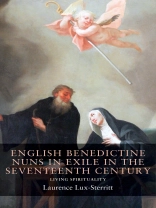This study of English Benedictine nuns is based upon a wide variety of original manuscripts, including chronicles, death notices, clerical instructions, texts of spiritual guidance, but also the nuns’ own collections of notes. It highlights the tensions between the contemplative ideal and the nuns’ personal experiences, illustrating the tensions between theory and practice in the ideal of being dead to the world. It shows how Benedictine convents were both cut-off and enclosed yet very much in touch with the religious and political developments at home, but also proposes a different approach to the history of nuns, with a study of emotions and the senses in the cloister, delving into the textual analysis of the nuns’ personal and communal documents to explore aspect of a lived spirituality, when the body which so often hindered the spirit, at times enabled spiritual experience.
İçerik tablosu
Introduction
1 The contemplative ideal of dying to the world
2 When spiritual and secular families overlap
3 The secular concerns of contemplatives
4 The missionary spirit of enclosed nuns
5 Taming worldly emotions and appetites
6 Divine love, an emotional panacea?
7 What place for the senses in contemplative life?
8 Illness, death and beyond: the body as witness
Conclusion
Index
Yazar hakkında
Laurence Lux-Sterritt is Senior Lecturer in Early Modern History at Aix-Marseille University, France and a member of the Research Centre on the English-Speaking World (LERMA)







![Örtmek Brian Schrag & Julisa Rowe: Community Arts for God's Purposes [Chinese] 貼近神心意的社群藝術 Örtmek Brian Schrag & Julisa Rowe: Community Arts for God's Purposes [Chinese] 貼近神心意的社群藝術](https://static.worldofdigitals.com/thumb_webp/740/9781645083740.webp)




